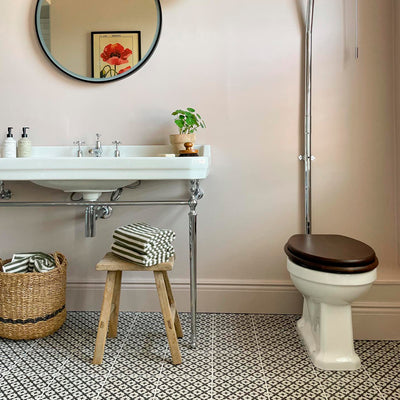The best tile sealer
When installing a new natural stone floor, whether it be indoors or outdoors, one important aspect to consider is tile sealer. With so many different types of tile sealant on the market, customers often question ‘which is the best tile sealer?’. In this post, we will cover what kinds of tile sealer are available, the process taken to apply a tile sealer, and the finished result and benefits of using tile sealers on our range of natural stone tiles.

Dijon Seasoned Limestone
Why you should use tile sealer


Farrow Grey Tumbled Limestone
What types of tile sealer are available?
When selecting a tile sealer for a limestone, marble or any other type of stone flooring, the main detail to look out for is whether the product is suitable for use on natural stone. If opting for a tile sealer of your choice, we recommend testing on a spare tile or inconspicuous area prior to application.
A main way in which tile sealer can differ is in the finish. There are several available, ranging from wet-look sealer to products that can also deepen and enrich the colour of natural stone tiles. Generally, we recommend that a regular, matt finish sealant looks best with our natural stone range, as this maintains as closely as possible the natural appearance of the tiles.

Dijon Tumbled Limestone

Windsor Grey Tumbled
If wanting to alter the appearance of your tiles, to show off extra detail or to darken their colour, then a suitable product such as Lithofin Colour Intensifier can be used along with regular tile sealer to achieve this look.


Riviera Burgundy & Riviera Emerald Honed Marble
Which tile sealer do you recommend?
The main tile sealer we both stock and recommend is the Lithofin MN Stain Stop. We have found through our own testing and through feedback from our customers that this tile sealer provides a durable, effective barrier against staining, whilst not negatively altering the colour or finish of the tiles. This means the layer of tile sealer is less noticeable than if opting for a product with more of a gloss or sheen finish.


Versailles Softly Aged Limestone
Other FAQs
How do I apply tile sealer?
We recommend ensuring the area has adequate ventilation during the sealant application. We advise a minimum of two coats of sealant, one before grouting and one after grouting.
1. Apply First Coat of Sealant
Apply the first coat of sealant generously using a sponge, whilst constantly moving the product around the area for 15 minutes, applying more product if necessary. It is always advisable to work in small sections to avoid application marks. Tilt the sponge at a 45-degree angle over the edge to protect the edges of the tile - take care to not flood the grout joints.
2. Buff Away Excess Sealant
Ensure all excess sealant is removed by buffing the stone touch dry with a white towel. It is important that pools of sealant are not left on the surface of the tiles.
3. Allow Sealant to Dry
All sealants should state the drying time. Allow the correct amount of time for the first coat of sealant to dry. After this, the tiles can be grouted.
4. Apply a Second Coat of Sealant Once the first coat of sealant is dry and you have grouted the tiles, you can apply a second coat of sealant using the above steps – this will also seal the grout and help protect the tiles and grout from water and potential stains.
For more information, please see our blog on how to seal natural stone tiles.
Does tile sealer alter the appearance of tiles?
If using our recommended Lithofin tile sealer, the appearance of the tiles should not be dramatically altered. There may be an extremely slight deepening of colour, and tile sealer may also enhance the texture in more rustic tiles such as natural riven slate.

Brazilian Black & Brazilian Grey Slate
How often should I reseal my tiles?
How often tile sealer needs to be applied can be dependent on the use and traffic a floor will see. We recommend resealing every 3-5 years for most indoor spaces such as kitchens, hallways and living areas. Bathrooms and shower areas will likely need tile sealer reapplying every 6-12 months as they can be subject to higher levels of humidity and moisture.
-
Hopefully you now have a good understanding of both the best types of tile sealer available, how they can protect your natural stone flooring, and the process required to seal your tiles. For further advice on tile sealer, or any other fixing materials, we welcome you to visit one of our UK showrooms or contact one of our friendly sales teams. Feel free to learn more about the materials needed for installation here.



